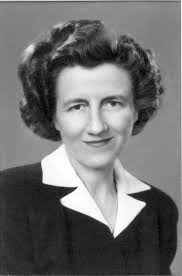Every October in West Virginia, youths stay up to read tales of phantom trains, headless ghosts, and floating coffins. With its orange cover and laughing skeleton, The Telltale Lilac Bush has captivated the imagination of Appalachian adolescents for over five decades, inspiring at least a few nightmares along the way.
The book, a collection of 100 ghastly folktales from across the Mountain State, was assembled in 1965 by Ruth Ann Musick, a professor of English and folklore at Fairmont State University. While some of the stories were recorded by Dr. Musick herself, many were gathered by her students on assignment for her English composition and folklore classes. As a result, the book captured family ghost stories and wove them into the wider folklore of Appalachia.

“Many of the stories that my paternal grandfather told me when I was a child as happening to him or someone he knew were collected by Musick,” said Christina Fisanick, associate professor of English at California University of Pennsylvania. “At first it made me wonder if he was lying to me or telling a tall tale, which is kind of funny given the nature of the stories.”
Regardless of the stories’ origins, The Telltale Lilac Bush is regarded as the pioneering text of West Virginia’s paranormal literature. While not an exhaustive compilation itself, nearly every ghost-hunting guide or collection of ghost stories from the state features tales initially recorded in either The Telltale Lilac Bush or Musick’s subsequent collection, Coffin Hollow.
“She was one of the first people to see the importance of collecting ghost stories from the region,” Fisanick said. “Often dismissed by others, Musick took these stories seriously enough to compile and publish them.”
Some of the stories featured in Musick’s books have become widely known beyond the campfire or storytelling circle. Featured in Coffin Hollow, the story of the “Greenbrier Ghost” has inspired a full-length musical and even a local beer.

The stories themselves vary in length and range from family lore to local legends. The eponymous tale of the lilac bush is only a few paragraphs long and features nameless characters handed down orally. In contrast, the account of the Greenbrier Ghost was recorded in the Greenbrier County press, as the appearance of the apparition was admitted as evidence in the trial of her alleged murderer.
Musick also listed the motifs present in each story in the endnotes: among the most prevalent were love triangles, haunted houses and—of course—unfinished business.
In addition to the importance of The Telltale Lilac Bush to both the study of folklore and the continued telling of West Virginia ghost stories, reading the book—particularly around Halloween—has become an experience shared by multiple generations of Mountaineers.
Jeremy Morris grew up in Beckley in the southern portion of the state; after being introduced to Musick’s stories in his fifth grade West Virginia history class, Morris became an avid reader of The Telltale Lilac Bush and Coffin Hollow with his own well-worn copies of both.
“They are two of my favorite books,” Morris said. “I’ve talked to a lot of other people in recent weeks who really loved them as well. They’ve meant a lot to many young West Virginians.”
Perhaps braver than this author—who first cracked open The Telltale Lilac Bush under the protective shield of bedcovers—Morris sought a greater thrill in the woods near his grandparent’s home.

“A lot of those stories took place in the late 19th and early 20th centuries, they were from a different time than when I was reading them,” Morris said. “Being out in the woods similar to where many of them took place made them seem not as distant. That kind of setting helped with trying to get goosebumps.”
“After a few stories I’d have to go back in the house and be around real, alive people,” he added.
Fisanick had a similar experience in the state’s Northern Panhandle, first reading The Telltale Lilac Bush in the third grade and subsequently seeing both of Musick’s books in bookstores and tourist gift shops across West Virginia.
“I was fascinated by storytelling in general and ghost stories in particular,” Fisanick said. “It is still one of my favorite books because of its eerie elements as much as what the collected stories tell us about the people of this region.”
Echoing Morris, Fisanick has discovered as an adult how much the book meant to other West Virginians growing up.
“It was a common text for many of us,” Fisanick said. “I posted the cover of The Telltale Lilac Bush on social media not long ago and people from various age groups chimed in saying that they loved the book as children and still do as adults.”
Still widely available throughout Central Appalachia, The Telltale Lilac Bush may be found in your local bookstore or library in time for Halloween. Eighty of the stories from both books can also be viewed in a YouTube series, filmed with permission from the publisher.
Subscribe to The Patch, our newsletter, to stay up-to-date with new expatalachians articles and news from around Appalachia.
Nick Musgrave first became fascinated with West Virginia’s history while growing up in Parkersburg. He continues to read, research and write on the Mountain State’s past from its birthplace in Wheeling. For more neat history and some political snark, follow him on Twitter: @NickMusgraveWV.


